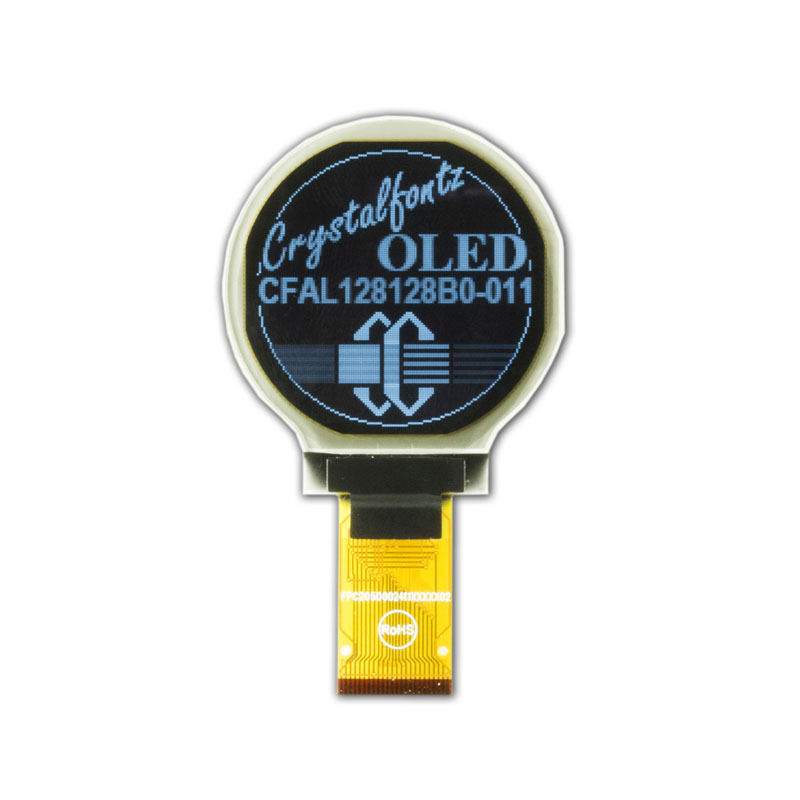OLED Display: The Future of High-Quality Visuals
2025-03-20
In today's fast-evolving world of display technology, OLED (Organic Light Emitting Diode) displays stand out as a revolutionary advancement. From smartphones and TVs to smartwatches and automotive screens, OLED displays offer superior image quality, energy efficiency, and flexibility compared to traditional LCDs. Let’s dive into what makes OLED displays a game-changer in the display industry.
What Is an OLED Display?
OLED displays use organic compounds that emit light when an electric current passes through them. Unlike LCDs, which require a backlight, each OLED pixel produces its own light, allowing for deeper blacks, higher contrast, and more vibrant colors.
Advantages of OLED Displays
1. Superior Image Quality
True Blacks: Since OLED pixels emit their own light, they can turn off completely, creating perfect blacks and infinite contrast.
Vivid Colors: OLEDs offer a wider color gamut, making images appear more natural and lifelike.
Faster Response Time: With near-instant pixel response, OLEDs eliminate motion blur, making them perfect for gaming and fast-moving content.
2. Energy Efficiency
Unlike LCDs, which require constant backlighting, OLED displays only light up the necessary pixels, reducing power consumption. This is especially beneficial for battery-powered devices like smartphones and smartwatches.
3. Ultra-Thin and Flexible Design
Because OLEDs don’t need a bulky backlight, they can be made extremely thin, lightweight, and even flexible. This technology enables innovations like curved TVs, foldable smartphones, and rollable screens.
4. Wider Viewing Angles
OLED screens maintain consistent colors and brightness from almost any angle, unlike traditional LCDs that may appear washed out when viewed from the side.
5. Faster Refresh Rates
OLED displays support high refresh rates (e.g., 120Hz or 144Hz), providing smoother animations and a better user experience, especially in gaming and high-performance applications.
Common Applications of OLED Displays
Smartphones & Tablets
OLED is the preferred choice for premium smartphones (e.g., iPhone, Samsung Galaxy) due to its high contrast, rich colors, and energy efficiency.
TVs & Monitors
OLED TVs offer cinema-quality visuals, deep blacks, and ultra-thin designs, making them ideal for home entertainment.
Wearable Devices
Smartwatches and fitness trackers use OLED for better battery life and vibrant displays in compact sizes.
Automotive Displays
Modern cars integrate OLED screens for dashboards, infotainment systems, and digital instrument panels, offering superior visibility even in bright sunlight.
Gaming Monitors & VR Headsets
OLED’s fast response time, deep blacks, and high refresh rates provide an immersive experience for gamers and VR users.
Challenges of OLED Displays
While OLED offers numerous benefits, there are a few drawbacks:
Burn-In Risk: Prolonged display of static images may cause permanent ghosting (though newer OLEDs have improved durability).
Higher Cost: OLED manufacturing is more expensive than LCD, making devices pricier.
Lifespan: Blue OLED materials degrade faster than red and green, affecting longevity.
Final Thoughts
OLED displays are redefining visual experiences across various industries, providing unmatched contrast, color accuracy, and flexibility. As technology advances, OLED is expected to become even more affordable and widespread, making it a dominant force in display innovation.
Looking for High-Quality OLED Displays?
Explore the latest OLED display technology for smartphones, TVs, automotive, and more. Experience the future of visuals today!



